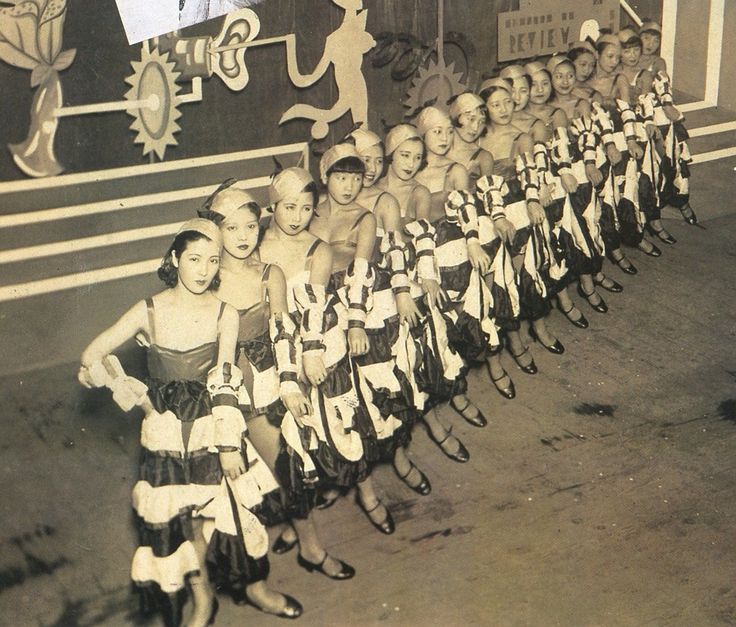As Japan marks 80 years since the end of World War II, the story of Tokyo’s Moulin Rouge Shinjuku-za shows how art and resilience intertwined during war and recovery.
The Shinjuku Moulin Rouge thrived through the 1930s and 1950s, offering music, dance, and laughter even as air raids and censorship closed in. Destroyed in 1945, the theater rose from the ashes two years later, reviving hope in a nation rebuilding from war.
Laughter in the shadow of war: the story of Moulin Rouge Shinjuku-za
 The Shinjuku Historical Museum contains a tribute to the old Moulin Rouge, with rich information about its history and its performers.
The Shinjuku Historical Museum contains a tribute to the old Moulin Rouge, with rich information about its history and its performers.
The Shinjuku Historical Museum’s permanent exhibition includes reconstructions of early Showa-era homes and miniature models of the bustling streets around Shinjuku Station. Visitors can feel as if they’re strolling through old Tokyo.
Among these displays is the Moulin Rouge Shinjuku-za, a real-life theater that once stood in Shinjuku during the early Showa period. The theater captivated audiences with modern revue-style performances that combined singing, dancing, and comedy.
The Moulin Rouge opened in 1931 near today’s southeast exit of Shinjuku Station, when new cinemas were rapidly emerging in the area. The name “Moulin Rouge,” meaning “Red Windmill” in French, was borrowed from the famous Parisian cabaret.
Like its namesake, the Shinjuku theater was adorned with a bright red windmill. With about 400 seats, the venue hosted witty satire, lyrical plays, and dazzling dance performances. It also produced stars such as Ashita Matsuko, often described as Japan’s first idol.
From around 1933, at the height of its popularity, Japan was slowly heading toward war. During this tense era, the dancers’ innocent charm and the writers’ witty urban satire offered the nation’s intellectuals a rare refuge—a place for laughter, comfort, and a brief escape from the growing pressure of militarization.
As the theater gained popularity, one performer in particular captured the nation’s heart — Ashita Matsuko.
Ashita Matsuko: One of Japan’s original idols

Ashita Matsuko, one of the star actresses born from the Moulin Rouge Shinjuku-za, joined the theater at the age of 13 and quickly rose to fame with her cheerful personality and strong acting skills.
Crowds flocked to see her perform, and her popularity soon extended beyond the stage. Like Kasamori Osen before her, Ashita would go down in history as one of Japan’s original idols.
Ashita became the face of major brands, appearing in ads for soft drinks, department stores, and beer companies. Within just three years of her debut, she reached idol-like fame.
Planning a trip to Japan? Get an authentic, interpreted experience from Unseen Japan Tours and see a side of the country others miss!

“Noah [at Unseen Japan] put together an itinerary that didn’t lock us in and we could travel at our own pace. In Tokyo, he guided us personally on a walking tour. Overall, he made our Japan trip an experience not to forget.” – Kate and Simon S., Australia

See a side of Tokyo that other tourists can’t. Book a tour with Unseen Japan Tours – we’ll tailor your trip to your interests and guide you through experiences usually closed off to non-Japanese speakers.


Want more news and views from Japan? Donate $5/month ($60 one-time donation) to the Unseen Japan Journalism Fund to join Unseen Japan Insider. You’ll get our Insider newsletter with more news and deep dives, a chance to get your burning Japan questions answered, and a voice in our future editorial direction.
However, as Japan moved closer to war, the country fell under an increasingly dark shadow. The name “Moulin Rouge,” meaning “Red Windmill” in French, was banned as an enemy-language term, forcing the theater to change its name to the hiragana むーらんるーじゅ and later to 作文館 (Sakubunkan).
Soon after, police began censoring scripts. Artistic freedom on stage became increasingly restricted.
Ashita’s Matsuko compassion on Japan’s wartime stage
In a 2018 interview, Ashita recalled, “Soldiers came every week. Students came to the theater carrying rifles after their military training.” When she appeared on stage, students about to be sent to Manchuria shouted, “Banzai for Ashita Matsuko!”- a Japanese cheer meaning roughly “Hurrah!”
Moments later, military police rushed toward them. They slapped the students’ faces and dragged them away, yelling, “What do you think you’re doing?” Ashita and her fellow performers stood frozen in shock.
In her autobiography, she wrote, “Because the stage and the audience were so close, we could feel the students’ sorrow directly. It was painful to keep dancing.” During one performance, she stepped down from the stage and told the students, “I pray for your safe return. Please come back alive.”
At a time when sacrificing one’s life for the nation was considered a duty, Ashita spoke those words out of compassion. She later explained, “Before they were soldiers, they were my fans. The war stole their youth.”
Ashita later traveled to Manchuria with fellow performers to entertain soldiers at the front. She remembered how soldiers who had lost their arms or legs could no longer clap. Instead, they showed their joy by shaking their heads and bodies in rhythm.
During one performance in Tokyo, she and the audience fled together when an air raid struck. Still, she continued performing for theatergoers who arrived wearing air-raid hoods.
In a 2017 interview, then 97 years old, Ashita reflected:
“We devoted ourselves completely. All we could do was comfort people through the art we were given, and we gave it everything we had.”
Destroyed in the war, the Moulin Rouge Shinjuku-za rose again
 The Moulin Rouge used to stand near where the Glitters Shinjuku building now stands, near Shinjuku Station’s Southeast Entrance.
The Moulin Rouge used to stand near where the Glitters Shinjuku building now stands, near Shinjuku Station’s Southeast Entrance.
Even as the Manchurian Incident erupted and the Second World War drew closer, the Moulin Rouge Shinjuku-za stayed packed with students, office workers, and others seeking entertainment.
In 1945, the Tokyo air raids reduced the theater to ashes. Lin Yiwen, a Taiwanese entrepreneur, purchased the site and rebuilt the venue. He was driven by a strong desire “to bring joy to people who had lost everything in the war.” In 1947, he reopened the Moulin Rouge Shinjuku-za and began managing the theater himself.
Planning a trip to Japan? Get an authentic, interpreted experience from Unseen Japan Tours and see a side of the country others miss!

“Noah [at Unseen Japan] put together an itinerary that didn’t lock us in and we could travel at our own pace. In Tokyo, he guided us personally on a walking tour. Overall, he made our Japan trip an experience not to forget.” – Kate and Simon S., Australia

See a side of Tokyo that other tourists can’t. Book a tour with Unseen Japan Tours – we’ll tailor your trip to your interests and guide you through experiences usually closed off to non-Japanese speakers.


Want more news and views from Japan? Donate $5/month ($60 one-time donation) to the Unseen Japan Journalism Fund to join Unseen Japan Insider. You’ll get our Insider newsletter with more news and deep dives, a chance to get your burning Japan questions answered, and a voice in our future editorial direction.
The venue continued to nurture talented writers and actors until May 1951, when it shuttered. It offered laughter and hope to a nation still healing from war.
Sources
常設展示のご案内 新宿区立新宿歴史博物館
昭和初期の新宿 新宿歴史博物館 常設展示解説シート 新宿区立新宿歴史博物館
「観る」「遊ぶ」「食べる」の多様なレジャーを提供「嬉しい時間を創る」ヒューマックスグループ <前編>
「ムーランルージュ新宿座」再興からの創業 歌舞伎町文化新聞
[語り継ぐ戦後80年] “戦時下のアイドル” 明日待子_空爆、検閲、慰問に踊りの伝承…最期まで “舞台” に全力を注いだ99年の生涯 北海道ニュースUHB


AloJapan.com